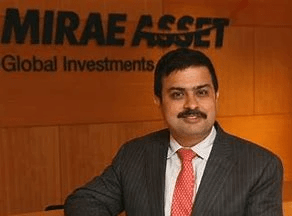2022 Emerging Markets Outlook

Coming out of 2021 and into the Lunar Year of the Tiger, there are three areas in which we believe Emerging Markets (EM) are ahead of the pack creating a foundation for opportunities within the asset class in 2022:
- Vaccination rates in key EM countries, such as China, Taiwan, South Korea, and most of Latin America, are well ahead of the US.
- Chinese regulations startled markets in 2021, but we believe similar rules are yet to come across US and European markets.
- Several EM central banks (Russia, Brazil Chile, Colombia, Mexico, Peru, the Czech Republic, Hungary, Poland, Korea, and South Africa) began raising interest rates well ahead of the US and Europe in 2021.

The performance spread between Emerging Market (EM) and US equities has hit multi-decade highs. Global institutional investors are now over 800 basis points (bps) underweight EM equities, and the asset class appears ripe for new allocations. EM presents a notably different environment going into 2022 than Developed Markets (DM). While DM vaccination rates taper off, EM vaccination numbers continue to improve.
EM Central Banks are already in the second half of their rate hiking cycles, whereas the US has not yet begun. Unlike US equities, which have remained supported by easy fiscal and monetary policy, EM has had to stand on its own two feet. Though regulations hit many Chinese companies in 2021, fines have been manageable and companies seem to be adapting quickly. US companies could still see future tax increases and new regulatory measures.

Even as many countries within EM face various headwinds, as active managers, we are finding attractive opportunities within the asset class. The growth differential versus DM is increasing, return-on-equity (ROE) ratios are converging, multiples remain suppressed, and allocators continue to look for opportunities outside of a concentrated US market. Other anticipated key catalysts for EM performance in 2022 include inflation moderation, improving US/China relations, and a weaker US dollar (USD). Structurally, the asset class looks attractive, as EM has benefited from a powerful consumer-driven domestic demand story. Cyclically, we believe EMs are coming out of the “hope” phase of the investment cycle and moving into “growth.”
On a regional basis, we continue to favor a domestic secular driven growth story in China and companies that have benefited from the structural reforms in India. Current macroeconomic conditions lead us to remain optimistic on South Korea and Vietnam as we look ahead. We see Latin America and Eastern Europe, Middle East and Africa (EEMEA) as under-owned regions. The average global equity investor has approximately a 4% weighting to EM and Asia represents roughly 80% of the asset class, which means the average investor has only around 1% allocated to Latin America and EEMEA combined. This underweight creates a significant moment for stock pickers assessing overlooked and inefficient regions. We see particularly attractive opportunities in Greece, Mexico, Brazil, and Russia.

Regional Overview
- Asia ex-Japan:
Similar to the rest of the world, Asian capital markets continued to experience volatility in 2021 due to the ongoing COVID-19 pandemic. However, high vaccination rates, improving mobility metrics, and policy shifts to a “living with COVID” approach are all positive signs supporting a post-pandemic reopening. We expect Asia ex-Japan to benefit from a rebound in domestic consumption as well as exports in 2022. Current macroeconomic conditions lead us to remain optimistic on India, South Korea, Vietnam, and select (but significant) opportunities in China as we look ahead.
- Latin America:
In 2022, we anticipate Latin America to balance political uncertainty with supportive commodity prices and economic reopenings across the region. Strong demand from DMs and recovering demand from China could lead to continued strength in energy, materials, and agriculture, which would improve current account and fiscal balances.

- Eastern Europe, Middle East & Africa (EEMEA):
EEMEA boasts a wide range of opportunities based on discounted multiples, strong demand for natural resources, improving geopolitical rhetoric, and sound domestic consumption stories. We are most optimistic about Greece due to the combination of a stable economic backdrop, market-friendly political leadership, and the tourism-led recovery. We also see opportunities in Russia driven by attractive valuations and macroeconomic tailwinds.
- Investment Risk
— There can be no guarantee that any strategy (risk management or otherwise) will be successful. All investing involves risk, including the potential of loss of principal.
- Emerging Markets Risk
— The risks of foreign investments are typically greater in less developed countries, which are sometimes referred to as emerging markets. For example, political, legal, and economic structures in these country may be changing rapidly, which can cause instability and greater risk of loss. These countries are also more likely to experience higher levels of inflation, deflation or currency devaluation, which could hurt their economies and securities markets.

For these and other reasons, investments in emerging markets are often considered speculative.
Similarly, investors are also subject to foreign securities risks including, but not limited to, the fact that foreign investments may be subject to different and in some circumstances less stringent regulatory and disclosure standards than U.S. investments.
Market Disruption and Geopolitical Risk — Geopolitical and other events, including war, terrorism, economic uncertainty, trade disputes, natural and environmental disasters, systemic market dislocations, public health crises, and related geopolitical events have led, and in the future may lead, to increased market volatility, which may disrupt U.S. and world economies and markets and may have significant adverse direct or indirect effects on the value of a Fund and its investments.
Market Turbulence Resulting from Covid-19 — The outbreak of Covid-19 has negatively affected the worldwide economy, individual countries, individual companies, and the market in general. The future impact of Covid-19 is currently unknown, and it may exacerbate other risks that apply to a Fund.
Written by Rahul Chadha, Mirae Asset Global Investments Chief Investment Officer

& Written by Malcolm Dorson, Mirae Asset Global Investments Senior Portfolio Manager
